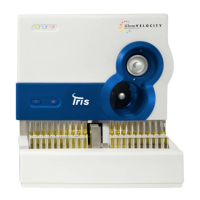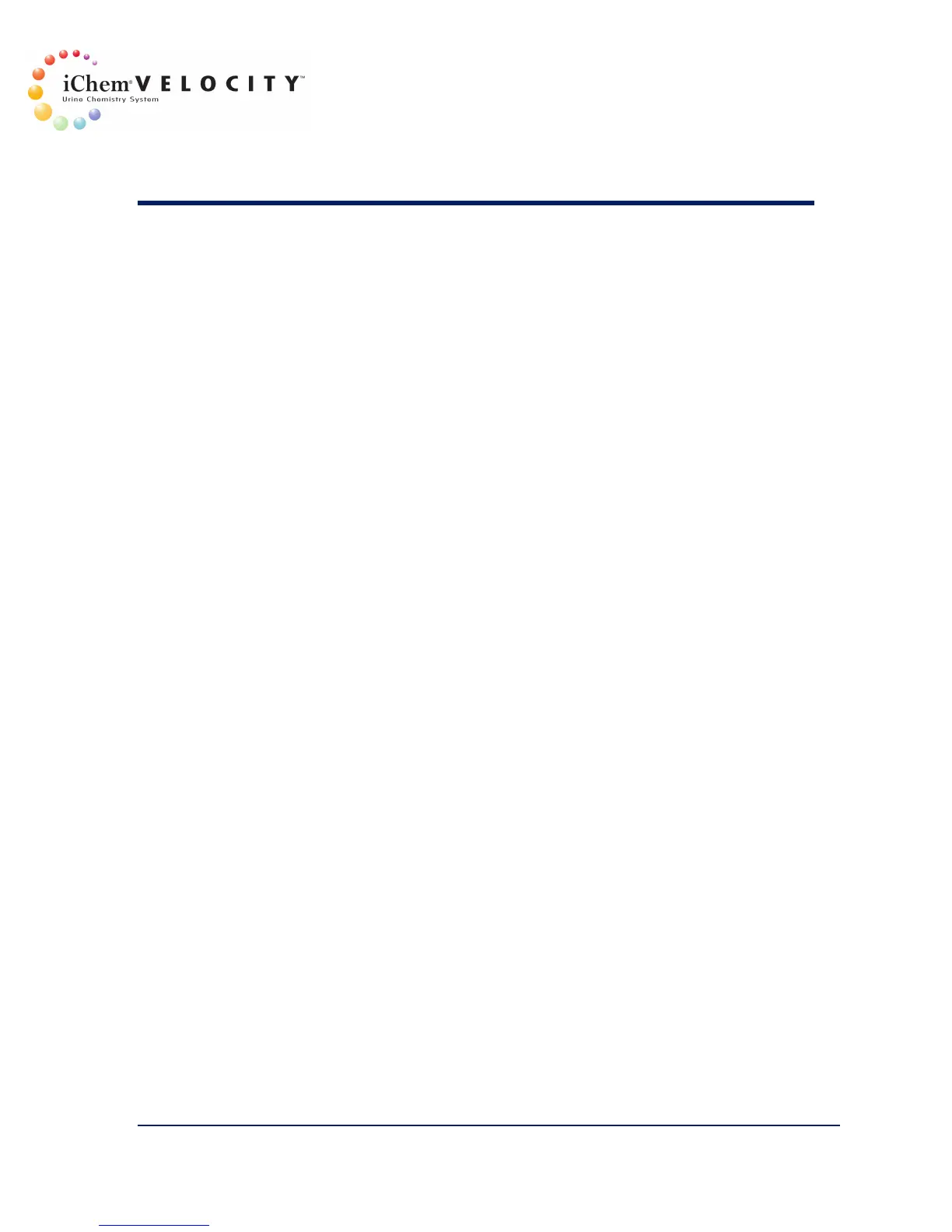11 Appendix
301-7146 English Rev B 11/02/2011 Operator’s Manual NA 228
hydrogen peroxide via the oxidation of glucose. Peroxidase then
catalyzes the reaction of hydrogen peroxide with a chromogen via the
oxidation of chromogen to colors ranging between green to gray-blue.
Other sugar compounds are not detected.
• Expected Values: A small amount of glucose (up to 20 mg/dL) may
be present in the normal urine. The detectable sensitivity of this test
has been adjusted to exclude the minute amounts of glucose.
Therefore, any positive response should be further evaluated.
• Sensitivity: 20 mg/dL glucose
• Performance Characteristics: The test pad does not react with
other reducing sugars such as fructose and galactose.
• Limitations: The test pad does not react with other reducing sugars
such as fructose and galactose.
• • Limitations: Acetoacetic Acid concentrations of up to 200 mg/dL did
not interfere with glucose assay test results (no false negative
results). High specific gravity, acidic pH values and gentisic acid may
inhibit color formation. Cleaning agents such as hypochlorite and
peroxide may lead to false positive results. Ascorbic acid
concentrations ≥ 300 mg/dL may interfere with the test. MESNA may
produce false positive results.
Protein
This test is based on the “protein error” of pH indicators on the green
color developed from the presence of protein. This dye-binding test is
particularly strong with albumin.
• Expected Values: Normal urine contains very little protein: usually
less than 10 mg/dL is excreted. Positive protein results are considered
pathological and should be investigated.
• Sensitivity: 20 mg/dL protein
• Performance Characteristics: the test pad detects primarily
albumin. A negative result does not exclude the presence of other
protein molecules such as Bence Jones proteins, globulin and
mucoproteins.
• Limitations: Food dyes such as red beets and therapeutic pigments
such as methylene blue and pyridium may mask the coloration of the
test pad. Interference may occur with high specific gravity.
Interference may also occur with disinfectants, wetting agents and
blood substitutes (quartenary ammonium compounds,
polyvinylpyrolidone, chlorohexidine). There is no interference from pH.

